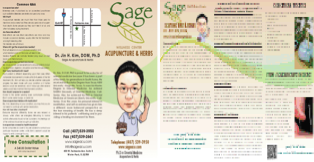
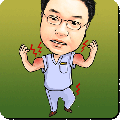
Acupuncture and Oriental Medicine for Musculoskeletal Issues
The musculoskeletal system consists of connective tissues including joints, ligaments, and tendons. Problems with the musculoskeletal system can result in inflammation and pain and, ultimately, reduce the body's overall health. Increasingly, people are looking for more natural approaches to help relieve painful musculoskeletal conditions instead of relying on medications. Acupuncture is a good therapy choice because it has no side effects and can be helpful for all types of pain, regardless of what is causing the pain or where the pain is located. Some studies have shown the pain relief provided by acupuncture can last for months. Magnetic resonance imaging (MRI) of the brain before and after acupuncture treatment for pain shows dramatic decreases in brain activity, up to 70 percent. This decrease in brain activity in certain areas of the brain is thought to be the reason for the reduction of pain caused by the acupuncture treatments.
Acupuncture & Musculoskeletal Conditions
Acupuncture has been proven as an effective form of treatment for a range of musculoskeletal conditions. Pain, stiffness, swelling and soreness, in muscles and joints can lead to an obstruction of energy (Qi/Chi), causing problems to the normal function of the whole body. An acupuncturist can restore these disturbances by inserting fine needles into specific points to relieve pain and reduce inflammation. Acupuncture is recommended in the National Institute for Health & Clinical Excellence (NICE) guidelines for back pain treatment. Many musculoskeletal conditions can cause symptoms of pain (ache, sharp, shooting, darting, soreness) or swelling or tenderness in the area. However there are other symptoms which are also connected with these such as sleep disturbance, fatigue, lack of energy or lethargy, anxiety and stress. Acupuncture attempts to treat the body as a “whole” and not just the localised symptoms. Acupuncture is regularly used in the treatment of the following musculoskeletal conditions:
- Back Pain & Sciatica
- Carpal Tunnel (wrist/hand)
- Stroke
- Arthritis
- Tendonitis
- Sprains & Strains
- Sports Injuries
- Neck Pain & Arm pain
- Bell’s Palsy
- Tennis Elbow
- Fibromyalgia
- Jaw Pain &/or teeth grinding
- Chronic periodontitis: Weak Gums
- Knee Pain
- Shoulder Pain
- Myofascial Pain
Acupuncture for muscle spasm
One of the more common complaints in the 21st Century relates to computer use and the damage to the “mouse” arm and hand, resulting in a very stiff neck and shoulders. Sometimes people suffer “tennis elbow” or “golfers’ elbow” from operating the mouse. This results in pain in the medial board or between the spine and the edge of the shoulder blade or the scapular. When people are operating the computer mouse six to eight hours a day, it will really test out the musculature of even the healthiest person. So unless there is some remedial action taken lifestyle-wise in these situations of overexercise, heavy physical labour, excessive sweating or extended computer use, it is common for muscle spasms to occur. From an Acupuncture perspective, we can view the body as a living tree – we have roots in the ground that draw the fluid up which travels through the trunk of the body to keep the limbs supple. So, if you like, we could use that analogy in relation to the musculature of the body. So from a cramping or muscle spasm perspective, we are looking at insufficient fluids being available in the extremities. The tendency of the area to spasm or tighten up is heightened by this lack of coolant or lubricant in its function through the body. We call this Yin deficiency (or the dark side of the circle deficiency). In Sage Wellness Center - Acupuncture & Herbs, we use our capacity to tonify what we call the Yin energy, and specifically the kidney and liver Yin energy, to help mollify the extreme circumstances that will produce muscle spasm and muscle pain. So we are not just looking at dealing with the symptoms and taking the pain away. We really want to get behind the scenes from the perspective of traditional acupuncture and nourish the roots of the tree, the analogy for our body. Flexibility and suppleness then are by products of the acupuncture treatment. From the Sage Wellness Center - Acupuncture & Herbs perspective, we are looking not only at taking some of the dead wood out but also looking to invigorate the growth and suppleness of the extremities of the body.
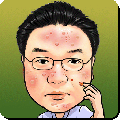
Treatment of Skin Conditions with Acupuncture
Acupuncture and Oriental medicine can be very effective at treating skin conditions. Treatments can provide quick relief for acute symptoms and significant and lasting relief from recurrent or chronic skin conditions. The skin reflects and reacts to imbalances within the body's internal landscape and the effects of the environment. Internal disharmonies caused by strong emotions, diet, and your constitution, as well as environmental influences such as wind, dryness, dampness, and heat, can all contribute to the development of a skin disorder. To keep your skin healthy and beautiful on the outside, you must work on the inside of your body as well. Increasing the flow of energy, blood and lymph circulation improves the skin's natural healthy color. Promotion of collagen production increases muscle tone and elasticity, helping to firm the skin. Stimulating the formation of body fluids nourishes the skin and encourages it to be moister, softer, smoother and more lustrous. General skin conditions that can be treated with acupuncture and Oriental medicine include acne, dermatitis, eczema, pruritus, psoriasis, rosacea, shingles and urticaria (hives). Oriental medicine does not recognize skin problems as one particular syndrome. Instead, it aims to treat the specific symptoms that are unique to each individual using a variety of techniques with acupuncture, such as herbal medicine, bodywork, lifestyle/dietary recommendations and energetic exercises to restore imbalances found in the body. Therefore, if 10 patients are treated with Oriental medicine for eczema, each patient will receive a unique, customized treatment with different lifestyle and dietary recommendations.
Acupuncture and Acne
People looking for help with acne often try remedy after remedy without much help. For thousands of years, Traditional Chinese Medicine (TCM) practitioners have used acupuncture and individualized herbal formulas to treat acne. That same wisdom can be effectively applied today. Acne is among the most common of skin conditions. It afflicts almost all of the adolescents to some degree, and can extend into adulthood. The degree of severity can vary widely, from a few white heads and blackheads, to extensive formation of cysts. Sometimes scarring can occur. But no matter how bad, acne can have a significant effect on social and emotional health. It can also be the source of physical pain and local skin infections. According to Western medicine, acne is a disorder of the hair follicle sebaceous gland. This gland can get clogged up from a skin, which is normally shed off the body. The clogged pore then becomes a pimple. Hormones and bacteria in the skin further exacerbate the clogging of pores. In some people, the pimple can become inflamed leading to development of large painful pimples, commonly referred to as cysts.
Traditional Oriental Medicine Viewpoint
TCM considers physical, emotional, and environmental factors of the individual when treating skin problems. From a TCM perspective, acne is most often associated with heat and dampness effecting the organs and channels of the lungs, stomach, and spleen. In Chinese medicine, each organ has specific functions and is connected to a channel that runs from the skin's surface internally to connect with the organ. The organs involved with acne are because of both the function as well as the locations of their channels. Lung - The lung is in charge of the skin. So any skin disease can therefore be related to the lung. We often see this in some skin diseases, such as eczema, which often occurs with lung problems. The lung also regulates the opening and closing of the pores, which is one way that the heat that causes acne can escape from the body. Stomach - The stomach naturally tends to be warm, which is how it helps in digestion of food. However, this propensity for heat can easily gather extra heat, which can manifest as pimples along the stomach channel, which covers the chest and the face. Dampness in the stomach also may be a factor, which leads to greasy oily skin. Spleen - Finally, the spleen is also involved. The spleen is in charge of digestion. When digestion is working well and harmonized the body generates ample amount of energy and is able to get rid of dampness. If the spleen is not working well, dampness can accumulate and lead to greasy skin and acne. These disharmonies have many overlapping causes. Stress, overwork, and congenital factors are some of the most common reasons. Food choices are also a common cause. Eating greasy, spicy, and heavy foods disrupt the function of the spleen in digestion that can lead to dampness, which can influence an acne flare-up. Which is why eating greasy pizza, too much chocolate, and spicy Mexican food can be bad for acne.
TCM Diagnosis and Treatment
By taking the pulse, asking in-depth questions, and observing the tongue and skin, the TCM practitioner will make an individualized diagnose according to TCM patterns. The treatment is tailored to fit to each person's pattern diagnosis. Depending on the condition, treatment may involve acupuncture, Chinese herbs, or both. Generally, mild acne can be treated with acupuncture, but more severe and complex cases often require Chinese herbs as well. Lung and stomach heat is the most common form of acne. This manifests as white or black heads on the face around the cheeks, nose, and forehead, as well as the chest, and upper back. Skin looks oily and may have a slightly reddish hue. The tongue will have a yellow coat. The goal of this treatment is to clear heat from the lungs and the stomach. Generally, the acupuncture treatment is on the lung and Stomach channels, which go along the arms and legs. Lung 5, at the elbow, is often used, as well as Stomach 36 below the knee. Herbs such as pi pai ye, huang qin, and sang bai pi may be used to clear heat from the lungs and stomach. Sometimes the heat is very strong, leading to dry mouth and thirst. To clear this heat and nourish the fluids of the body, herbs such as xuan shen and mai men dong are added. If there is significant dampness in the stomach, the skin will be more oily and greasy. Often this will lead to large acne and cysts on the chest and back. Herbs such as bai zhu and yi yi ren may be added to clear even more heat. For those with this type of acne, it is very important to avoid greasy foods. The skin around areas of acne may become red causing a general reddish complexion, which may remain after the pimples have been cleared. This is because the heat has entered the blood level. Herbs such as honeysuckle flowers, rose hips, and lotus flowers can be used for this condition. Heat toxicity develops when the skin becomes infected. Toxicity manifests as is redness, pus, and pain. Herbs such as honeysuckle and dandelion may be used for this. In women, if acne becomes worse around the menstrual cycle, it may be related to the qi, the body's energy, and blood. Qi flows throughout the body's channels. Emotions such as stress, frustration, and anger can cause the qi to slow down to stagnate. Frequently, acne and other skin problems which occur around the menses are caused by qi and blood stagnation. For this acupuncture points such as Liver 3 on the foot, and Spleen 6 above the ankle may be used. Herbs such as yi mu cao, xiang fu, and bai shao may be added. Chinese Medicine and Acupuncture is a holistic treatment. It can help those with all degrees and types of acne with clearing the skin, as well as improve overall wellness.
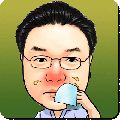
Treating Allergies with Acupuncture and Oriental Medicine
With spring's sunshine and flowers come wind and pollen, which for many people signals the onset of allergy season. Tree pollens are the most prevalent pollens in the spring and many trees are prolific pollinators. Grass and weed pollens follow in late spring and summer, and airborne mold spores can be found almost year round, as well as other common allergens such as dust, dust mites, and animal dander. While many over-the-counter remedies promise symptomatic relief, practitioners of Traditional Chinese Medicine (TCM) believe that addressing the causes of allergies, treating the whole person, and focusing on balancing the immune system leads to substantial long-term health benefits in managing allergies.
What are allergies?
Allergic rhinitis, or hay fever, is an example of misplaced immunity. It is a learned response by the immune system wherein rapid physiological changes resulting in itchy eyes and throat, sinus congestion and sneezing, asthma, and even diarrhea are produced. Typically, exposure to an allergen such as tree pollen elicits a massive release of IgE antibodies which attach to white blood cells known as mast cells. These cells are mostly located in the lungs and upper respiratory tract, the lining of the stomach and the skin. When these cells are stimulated, they release a number of chemicals including histamine which produce the allergic symptoms. IgE-mediated allergies result in almost immediate symptoms and may be life-long or "fixed." There are also other types of allergic responses, which can be transient. One example is the delayed hypersensitivity reaction in which the allergic response may take up to 72 hours to manifest itself. These immune system reactions are often IgG-mediated and are commonly seen with food as well as inhalant allergies. Additionally, practitioners may also use the term allergy to describe other immune system responses such as nonspecific hypersensitivity or intolerances which are not classic allergic reactions but produce undesirable health effects in response to environmental exposures. One useful theory of allergy is the Total Load Theory, which states that for some people exposure to a single allergen may not be enough to trigger a symptomatic response; however, exposure to several allergens near the same time elicits an allergic response. For example, let's say that one is allergic to cow's milk and to cypress pollen. She may drink milk daily without any noticeable allergic response, however when cypress pollens are present, she suffers from allergies. By avoiding dairy products during pollen season, she may be able to lessen her "allergic load" and reduce her symptoms without reliance on symptomatic medications.
Allopathic Treatment of Allergies
Basic allopathic [western] medical therapies often rely on inhibiting the allergic response; antihistamines (Chlor-trimetron, Benadryl, etc.) are a good example. Other types of drugs used to treat allergic rhinitis or asthma include ones which act on the nervous system (Albuterol, epinephrine), cortico-steroids (prednisone), and decongestants. Western medicine also emphasizes the importance of avoiding the allergen if possible, and the use of air filters to decrease exposure. When avoidance or elimination is impossible or impractical, the next level of treatment may be desensitization, the injection of small amounts of the allergen in gradually increasing doses in order to neutralize over time the number of antibodies present. Although allopathic medicine is very effective at treating the allergic response, side effects such as drowsiness in some people, immune system suppression or over-reliance on medications cause many to seek alternative approaches to managing their allergies. Many turn to their acupuncturist for advice and treatment.
Allergies, Respiratory Health, and Traditional Chinese Medicine
TCM often views allergic rhinitis as related to Wind noting that symptoms come and go rapidly, cause congestion, and make the person want to avoid windy situations. This Wind often coexists with a deficiency of the Protective or Wei Qi. The nearest thing we associate with the Wei Qi in the west is resistance to colds and other respiratory infections. People with Wei Qi deficiency catch colds easily, and allergy symptoms may be particularly bad in the spring or fall, seasons which are generally windy. The acupuncturist also looks for constitutional or more deeply-rooted signs in each person who presents with allergies. The principle here is treating the whole person. Often people with chronic allergies show signs of Spleen or Kidney Deficiency as well as Lung signs according to TCM. The goal of the acupuncturist is to develop a plan which addresses the person's acute symptoms and provides relief, while addressing the underlying immune system imbalance which is thought to be at the root of the person's allergies. Treatments often include dietary modification, the use of specifically chosen herbal formulas, and acupuncture. Let's look briefly at an example of TCM treatment for allergies: John presented with acute allergy symptoms of one-month's duration which included sneezing, runny nose with lots of watery phlegm, extreme fatigue and occasional loose stools. After taking his history and doing an examination, his acupuncturist assessed his condition according to TCM as Wei Qi Deficiency resulting from a weakness of the Lung and Spleen. In addition to general recommendations for his condition, John was given Minor Blue Dragon formula which has decongestant properties for those with copious clear phlegm, as well as Astra 8, an herbal formula designed to tonify the Lung and Spleen Qi. He was also told to minimize or avoid dairy products and excessively sweet or spicy foods. As John's condition improved, he and his acupuncturist developed a plan to strengthen his immune system in preparation for next year's allergy season. This plan included replacing coffee with green tea, which is rich in catechins which exert anti-allergy effects, as well as taking quercetin, a bioflavinoid which has been shown to stabilize mast cells thus slowing the release of histamine and other chemicals related to allergies. We can see that a comprehensive plan consists of both general therapies which are useful in the treatment of allergies as well as an individualized approach to each patient. After allergy symptoms are managed effectively, we then begin to address the long range plan of modifying the person's response to his environment which, if successful, reduces the frequency and severity of future allergic responses. Acupuncture and Oriental medicine is an art and a science that takes years to master.
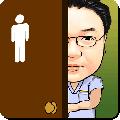
Can acupuncture treat Irritable Bowel Syndrome (IBS)?
Yes, it can. An increasing number of studies have been conducted on treating IBS with Chinese medicine, with promising results. These studies have documented that Chinese medicine can effectively treat IBS in a safe and drug-free way.
What is IBS?
Irritable bowel syndrome (IBS) is also known as spastic colon or mucus colitis. It is labeled a syndrome because is involves a group of symptoms that varies for each individual who is affected. It is a motility disorder (involving abnormal movement) of the small and large intestines. Symptoms of IBS include abdominal cramping and pain, and constipation and/or diarrhea (often in alternating episodes). IBS may also be accompanied by other gastrointestinal problems, such as flatulence, bloating, and nausea. Symptoms are almost always aggravated by stress. Episodes may also be aggravated by eating, and are frequently relieved after a bowel movement. An estimated 10 percent to 20 percent of all Americans are affected by symptoms of IBS, with three times as many women as men being affected. The cause of IBS is not yet known. However, we do know what does not cause IBS. IBS is not a structural problem, meaning there is no anatomical change, nor is it biochemical or infectious in nature. Researchers are exploring the theory that there are direct links between the brain and the gastrointestinal system, which would explain why flare-ups of IBS are sometimes triggered by emotional upsets or stress.
IBS according to Chinese Medicine
While other patterns may be present, IBS is almost always considered a disharmony between the liver and the spleen in traditional Chinese medicine. The liver is responsible for the smooth flow of substances throughout the body. This flow can be upset by emotions or stress, causing stagnation of Qi (energy) or blood. Traditional Chinese medicine views the spleen as being associated with the function of digestion and transforming food into energy (Qi and blood). The spleen can be weakened by a number of factors, including overeating unhealthy foods, overwork, too much worry, fatigue, and lack of exercise. When the spleen is weak and the liver is not moving smoothly, the liver overacts on the spleen and can manifest as symptoms of IBS. A liver/spleen disharmony is similar to the short-term loss of appetite or a bout of diarrhea that occurs during an occasional emotional upset. With IBS, however, the phenomenon occurs in slow motion; the emotional trauma or stress takes place over a long period of time, and the digestive symptoms of IBS can last for years. Practitioners of acupuncture or traditional Chinese medicine may use a variety of modalities to correct a liver/spleen disharmony. They may use acupuncture, Chinese herbs, dietary therapy and lifestyle changes to facilitate healing of this condition. The herbal formula Tong Xie Yao Fang addresses the disharmony between the liver and spleen, and might be a starting point with modifications for each individual case. Some lifestyle changes that may help alleviate symptoms include:
- Getting adequate exercise, which helps relieve stress, moves energy, regulates the bowels, and helps alleviate constipation.
- Practicing stress relief measures, such as meditation, yoga, breathing exercises, or quiet time, is key to keeping IBS symptoms under control.
Dietary changes should be individualized, and should focus on eliminating foods that trigger symptoms and adding adequate fiber to the diet. Soluble fiber is gentler on the GI tract, and includes foods such as oatmeal, berries, and legumes like lentils and garbanzo beans. Crude fiber, such as bran and raw vegetables and their skins may be too irritating, and should be monitored as a trigger for symptoms. Other foods that are common triggers include greasy or fatty foods, diary products, alcohol, caffeine, chocolate and drinks that are carbonated. Probiotics may be helpful for some sufferers of IBS. Probiotics are supplements that replace the good bacteria in the gut necessary for digestion. A common form is Lactobacillis acidophilus, which can be found in most natural foods stores. Adequate sleep is important for sufferers of IBS, because stress, which is the most common trigger for IBS, is aggravated by lack of sleep. In addition, adequate sleep helps the body heal and rejuvenate.
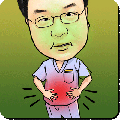
Traditional Chinese Medical Theory for Digestive Disorders
In traditional Chinese medical theory, the Spleen is the key organ involved in gastro-intestinal disorders. The Spleen has primary responsibility for "transforming" and "transporting" food essence in the body, including the excretion of waste material. The Spleen and Stomach are Yin/Yang partners, and each one can develop characteristic problems. The Spleen needs to be somewhat moist in order to function well, but if it becomes deficient in Chi, it will become overwhelmed by moisture, and a pathological condition of Dampness (or Damp Heat) can settle into the body. The Stomach, on the other hand, needs to be on the dry side to function well, and when its balance is upset, it can easily overheat, and a painful condition of Stomach Fire can develop. Other organs, especially the Liver, can also contribute to gastro-intestinal distress. The four most common patterns seen when gastro-intestinal problems are differentiated are as follows: Spleen Chi Deficiency, which is caused by chronic fatigue or chronic illness; Damp Heat Retention, which is caused by improper diet, environmental factors, or infections; Disharmony of Liver and Spleen, which is caused by emotional disturbance; and Spleen and Kidney Yang Deficiency, which is caused by chronic illness or aging. To treat these imbalances, Chinese medicine commonly uses acupuncture, herbal medicine, and moxibustion. When applied properly, these modalities balance Yin and Yang, harmonize Chi and Blood, nourish the organs, and eliminate Damp Heat. Conditions which respond well to acupuncture, moxibustion, and herbal medicine include:
- gastrointestinal infections such as virus infections from rotavirus
- bacterial infections from salmonella, shigella or escherichia coli
- inflammatory diseases such as chronic gastritis, atrophic gastritis, chronic enteritis, and gastroenteritis
- peptic ulcers such as duodenal ulcer and gastric ulcer
- circulation problems in the gastrointestinal system such as gastrointestinal tract bleeding and intestinal cramps
- gastrointestinal tumors such as stomach cancer, tumors of the small intestine, or colon cancer
- inflammatory bowel diseases such as ulcerative colitis and Crohn's disease
- other conditions such as irritable bowel syndrome and short bowel syndrome.
Moxibustion for Gastrointestinal Conditions
Traditional Chinese medicine employs several healing techniques to treat patients, including acupuncture, herbal formulas, and moxibustion. Acupuncture and herbs are familiar to most people in this country, but moxibustion is less well known. Moxibustion is a therapeutic technique of applying an ignited cone or stick of mugwort or other medicinal herbs over the affected part of the body or on the acupuncture points. Moxibustion is often used to warm up cold conditions, or to tonify deficient conditions, but it is also an effective agent against certain types of inflammation, and can be used to treat most gastro-intestinal conditions. Scientific Support How do we explain these beneficial effects of Chinese medicine modalities in a modern clinical sense? How does it work from the viewpoint of biomedicine? Numerous modern studies, most of them conducted at China's leading research and teaching institutes and in hospital settings, show that acupuncture, moxibustion, and herbal medicine can bring about bio-chemical changes. The following are a few examples: Excretory Rate of D-Xylose. The excretory rate of D-Xylose is an index of the absorption function of the intestines. Patients with chronic gastritis, chronic enteritis, or peptic ulcer tend to have a lower excretory rate of D-Xylose. A number of clinical studies in China show that acupuncture and moxibustion can increase the D-Xylose excretory rate significantly. Serum Gastrin. Gastrin is a hormone in the digestive tract, secreted mainly by cells in the stomach in response to eating food. Gastrin causes the stomach to produce more acid and also stimulates contraction of muscles in the wall of the stomach, ileum, and colon. This contraction propels food through the digestive tract. A very recent study at the Affiliated Hospital of Sichuan Academy of Traditional Chinese Medicine found that moxibustion (moxa made with astraglus, codonopsis, etc.) at acupuncture points St 36, Ren 4, and Ren 12 can raise the serum gastrin level. T-lymphocytes and their Subgroups. T-lymphocytes and their subgroups reflect the status of cells' immune functions. Substantial evidence shows that Spleen Deficient patients have a lower immune function at the cellular level. Clinical studies in China show that acupuncture and moxibustion can increase T-lymphocytes and their subgroups in the blood. Ache when working normally. In people who have GERD, the muscle relaxes at the wrong times, allowing stomach acid to churn up into the esophagus and resulting in heartburn symptoms. By applying only mild stimulation to an acupoint on the wrist known as Neiguan, researchers were able to reduce the frequency of TLESRs from six to 3.5 an hour in research subjects. Sham stimulation of a hip point produced no comparable change. Researchers cautioned that it's still a big leap from these promising results to a reliable cure for GERD.
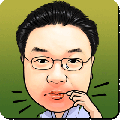
Cold sores, also called fever blisters, are painful blisters that form around the lips and mouth. If you are one of the millions of people who experience cold sores now and again, you’ll be delighted to know that acupuncture and herbs can help to cut the duration of the sores and also lessen the intensity of symptoms. Regular treatment can even prevent the sores from occurring! Cold sores are caused by the herpes simplex virus. When the herpes simplex virus causes sores on the lips and mouth, we call them cold sores. When the virus causes sores on the genitals, this is genital herpes. Cold sores can feel painful, numb, tingling, or hot and burning. They usually pop after a few days and then crust over as they heal for the next 1-2 weeks. Cold sores are very contagious as the virus is spread through the fluid contained in the blisters. From an acupuncture perspective, cold sores are a good example of toxic heat in the body forcing it way out. Acupuncture treatment focuses on releasing this heat to relieve the symptoms, and also boosting the immune system to help the body recover more quickly. There are numerous Chinese Herbs that are very good at shrinking the size of cold sores when applied topically. These herbs are often also used in external washes for genital herpes, and can cut the duration of an outbreak significantly. Once someone has caught the herpes virus, the virus lives in the body permanently, but lies dormant much of the time. When our immunity is compromised or we are subject to hormonal fluctuations, this allows the virus to become active as our natural defenses are not as strong as they usually are. For this reason, many people experience cold sores when they are stressed, sleep-deprived, or coming down with another sickness. Women also may experience cold sores around their periods with the hormonal fluctuations. As mentioned, acupuncture and herbs can build up the body’s natural defenses so that you can fight off the cold sore more quickly, and can also moderate pain associated with the blisters. My favorite herbal product that I most often recommend is called Yin Care Oral Wash, and it is super effective at reducing cold sores. Patients report instant relief when using it. Yin Care contains a dozen or so Chinese Herbs that focus on relieving toxicity in the body (ie, a virus), clearing heat (the redness of the blister signifies heat) and reducing dampness (ie, the fluid in the blister.) Other topical and internal herbal applications can be specifically designed for more severe cases of cold sores. Even better, longer-term acupuncture treatment can boost the body’s defenses to the point that you don’t experience cold sores anymore, even when stressed! Because cold sores tend to appear when your immunity is compromised, here are some other things to do to avoid an outbreak of cold sores or herpes:
- Get enough sleep.
- Boost your immune system during periods of stress with vitamin C and echinacea, or see a Chinese Herbal Medicine practitioner for herbal formulas focused on boosting immunity.
- Drink enough water, which helps your body flush out toxins.
- Minimize stress reactions as much as possible – try things like yoga and meditation to calm your body’s nervous system.
- Exercise every day – this is shown to decrease stress and boost immunity.
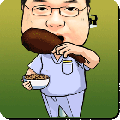
I am going to tell you a secret. All diets will work if they lower your caloric intake and you STICK TO IT! It's pure physics: Our weight is determined by the amount of energy that we take in, and the amount of energy we expend.
So why is obesity now a national epidemic?
The problem is that it is against our nature to limit calories. We instinctively eat more than we need to. This is a "gift" passed down from our hunter-gatherer ancestors from a time when there wasn't a drive-thru window on every corner. We also tend to eat in excess due to our modern lifestyles, chronic stress, and other psychological "triggers".
Going to Extremes
People will go to drastic measures to lose weight. Fad diets ask you to eat an unnatural and unhealthy diet, such as a meal plan of cabbage soup or pineapples or rice or no-carbs, They may work in the short term because of the low caloric intake, but there is absolutely no way you can keep it up. Your body and mind will rebel and take revenge for putting it on such a restrictive regime, rather than providing whole foods and a "whole diet" with proper nutrients. Instinctively, your body will crave foods and gorge, filling up, terrified of and preparing for the next starvation, packing on fat for stored energy. Eating an unnatural and highly restrictive diet can cause yo-yo dieting and drastic ups and downs in body weight. Improper diet practices can also cause malnutrition, organ damage, slow metabolic rate and imbalances within the body. Wouldn't it be great to decrease the amount of food that you take in, and increase the amount of energy you expend? It's entirely possible, thanks to acupuncture and traditional Chinese medicine (TCM). Acupuncture and TCM address both the physiological and psychological aspects of weight loss. A comprehensive therapy for weight issues rooted in TCM promotes better digestion, smooths emotions, reduces appetite, improves metabolism, and eliminates food cravings.
Weight loss according to Traditional Chinese Medicine
According to TCM, the root of excess weight is an imbalance within the body caused by malfunctioning of the spleen and liver organ systems. In five-element theory, the spleen is responsible for the proper functioning of the digestive system, ensuring that the food we eat is transformed into Qi – the vital substance of life. Disharmony of the spleen will have symptoms such as fatigue, slow metabolism, water retention, loose stool, and feeling of heaviness. The liver's job is to keep the flow of your body's Qi and blood (as well as your emotions) running smoothly. Our modern, fast-paced lifestyle and chronic stress can negatively impact the liver's ability to function properly and smoothly, which, in turn, can cause the spleen and the whole digestive system to function poorly and decrease your metabolism. Liver disharmony can also cause some of the "triggers" that lead to cravings and compulsive eating.
Backed by Research
A growing body of research supports the use of acupuncture and Asian medicine in weight loss: A 2003 study published in The Journal of Medical Acupuncture found that participants receiving acupuncture lost more than three times more weight than the control group. In a study conducted by the University of Adelaide in Australia in 1998, 95 percent of the participants receiving electro-stimulation on acupuncture points reported appetite suppression. The results showed that the acupuncture group was more likely to experience a reduced appetite and to lose weight than the control group.
The Acupuncture Weight Loss Treatment
From a TCM perspective, the acupuncture points, foods and herbs that are chosen to assist with weight loss directly influence the Qi of the spleen and liver systems to treat the root imbalances that are causing the weight gain. From a Western perspective, acupuncture and TCM have been shown to have an effect on the function of the nervous system, endocrine system, digestive system, food cravings, and metabolism. All of which can help to energize the body, maximize the absorption of nutrients, regulate elimination, control overeating, suppress the appetite, and reduce anxiety.
Acupuncture Points for Weight Loss
The beauty of acupuncture is that each treatment is catered to the needs of the individual patient. Acupuncture points on the body will be chosen for overall well being with the objective of increasing circulation of the blood and Qi (stimulating the metabolism) and calming the nervous system. In addition to treating the root of the imbalance within the body, different acupuncture points may be chosen for each treatment as different symptoms arise. For instance, if you are experiencing a desire to overeat related to premenstrual syndrome (PMS) one week, then that can be addressed at that week's appointment. Generally treatments are scheduled once or twice a week for 8 to 12 weeks or until the goal weight has been reached. The treatments include a combination of auricular (ear) and body acupuncture, ear tacks or pellets to leave on in-between treatments, herbs and supplements, abdominal massage, breathing exercises, and food and lifestyle recommendations.
Ear Points
Acupuncture points on the ears have been found to be particularly effective for weight loss. The human ear has been described as a micro-system of the body in an inverted fetal position; it contains points relating to all major organs and body parts. Auricular points for weight loss are stimulated with small tacks during treatment. Then seed-sized beads or magnets are taped to the points to enhance the effectiveness of the points at home. The beads will generally stay in place for 3 days to a week and can be gently massaged for 10-second intervals if cravings occur. Here are some of the most commonly used auricular points:
- Shenmen: Important point for calming the mind and reducing stress
- Small Intestine: Reinforces spleen, promotes digestion.
- Mouth: Calming point used for smoking, over eating and hyperactive talking.
- Hunger Point: Used to relieve hunger and control compulsive eating
- Endocrine point: Moves liver Qi and aids in the function of the metabolism
A Total Health Program
Most patients report a marked decline in appetite and cravings with acupuncture alone but herbs, healing foods, and exercises can definitely enhance the efficacy of the treatments. Herbs and Healing Foods: The herbs and foods that are chosen during a weight loss treatment are for promoting healthy digestion, energizing the body, augmenting Qi, and improve elimination of water, toxins, and waste products. Foods that are bitter, sour and acrid to taste are especially good for weight loss, while sweet, salty and greasy foods should be reduced. Abdominal massage/exercise: Points on the abdomen improve digestion, absorption of food and peristalsis of the intestines. The abdominal points can be stimulated with massage or by belly breathing, where the abdomen is consciously moving in and out with each breath. Deep breathing with visualization can also strengthen will power and be used as a tool to curb hunger and cravings. Acupuncture and traditional Chinese medicine are powerful tools for healthy weight loss, by itself or as a supportive treatment in conjunction with other weight management programs. In the struggle to eat less and expend more energy, you may find that acupuncture is just what was needed to overcome cravings, boost energy, enhance your metabolism, and increase your willpower to succeed!
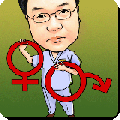
Acupuncture and herbs have been used to strengthen and promote optimal sexual health for centuries. Chinese Emperors took their sexual health quite seriously and would consult with a team of physicians if they experienced any difficulties in the bedroom. While Oriental medicine is well know for improving men's sexual performance; in fact, there have been medical textbooks devoted to the subject; acupuncture can quickly increase male and female libido and restore sexual desire.
1. How can acupuncture improve a lagging libido?
To understand how acupuncture can improve a lagging libido, you have to know the underlying factor that is causing the problem. Causes of waning sexual interest include emotional issues, post-childbirth, breastfeeding, onset of menopause, drug reactions, stress, weight gain, relationship conflicts, hormonal imbalances and physical responses, such as pain or inability to reach orgasm. With herbal medicine, a low libido is seen as an imbalance of Qi (energy) within the organ systems, specifically the Kidney and Heart system. Once the cause of the problem is discovered, specific points are stimulated to alter various biochemical and physiological conditions in order to strengthen both the mind and body to bring you back to prime sexual health. herbs are chosen that will enhance the treatment by increasing vaginal lubrication, calm the mind and regulate hormone imbalances. Ginseng, for instance, can balance the glandular system, which effects mood and sexual desire. Hormonal precursors, such as Horny Goat Weed, boost natural levels of testosterone to arouse sexual drive and libido. Other herbal extracts combine synergistically to awaken and enhance female sexual pleasure as well as increase orgasmic strength.
2. Are there other benefits for sexual health that can be garnered through acupuncture?
Acupuncture is not only for a lagging libido, it can be used for numerous sexual health conditions for both men and women. Here is a brief list of Sexual Health problems that Oriental Medicine and Acupuncture can help:
- Diminished Libido
- Vaginal Dryness
- Infertility
- Menopause
- Premature Ejaculation
- Low Sperm Count
- Diminished Sperm Motility
- Impotence
- Male Climacteric (men-opause)
- Premature Ejaculation
- Low Sperm Count
- Diminished Sperm Motility
- Hernias
- Testicular Pain
- Prostatitis
- Benign Prostatic Hypertrophy
- Male Infertility
- A hesitant, interrupted, weak stream
- Urgency and leaking or dribbling
- More frequent urination, especially at night
3. How does acupuncture compare to conventional medicine to improve sexual health?
One of the most appealing qualities of acupuncture and Herbal Medicine is the low risk of adverse reaction or side effects. While conventional medicine may treat some symptoms of lowered libido it can also increase the risk of certain types of cancer and have a number of significant side-effects. Another benefit is that acupuncture treatments work synergistically to treat the whole person. In medicine, due to our diagnostic system, we are able to assess a persons whole constitution (the health of their whole body) and treat the root (or cause) of a health concern along with a branch (or the symptoms) of a health concern. It is in this way that we are able to treat a person's whole body and mind, rather than just a symptom.
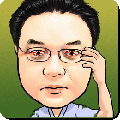
The world is changing more rapidly than at any other time in human history. As our concepts of Western medicine have shifted in recent years, today's public demands a more comprehensive approach from its health care providers. The reductionist method of referring each symptom to the domain of a particular specialist, isolated from the whole person, is being replaced slowly with more complementary forms of health care like acupuncture and Chinese medicine. We are beginning to look at each person as an integrated being. Health providers now consider dietary preferences, exercise regimens, the types of relationships the person is engaged in, as well as the particular symptoms that brought him or her into treatment in determining treatment strategies. I believe that eyesight is not an isolated phenomenon but is rooted in our totality. Our being includes our genetic makeup, the food we eat, our work environment and exposure to air borne toxins, as well as our belief systems about ourselves and our world. Each unique individual literally takes in the world through the senses, primarily vision. The way we see the world is, to some degree, a reflection of who we are. Our being is further reflected in the visual symptoms we manifest. The body does not work as a series of parts in isolation, but as a dynamically integrated living system. Every cell in the body has receptors for neurotransmitters, so in a real sense every cell is a nerve cell. We do not see with our eyes or think with our brains, but rather live in a "minding body." This biological awareness of every cell is really the foundation of vision, the ability to derive meaning from patterns of electromagnetic stimuli we call light and to direct action based on this interpretation. The skin of the entire body is covered with tiny electric eyes known in Chinese medicine as acupuncture points. These points follow along the flow of energy streams called meridians. In Chinese medicine, when the meridians are flowing smoothly, there is neither pain nor illness. When blockages exist in the meridians, pain and illness result. Each acupuncture point is a window of heightened sensitivity close to the surface of the skin, providing the acupuncturist with easy access to the meridians to clear blockages. As vision problems are reaching epidemic levels in our society, the eye care industry has become a multi-billion dollar business. Its major tools such as glasses, contact lenses and eye surgery enter the lives of virtually all citizens of the Western world. In The Art of Seeing, Aldous Huxley wrote, "If everyone who had deficient vision had broken legs, the streets would be full of cripples." Patients go to their eye doctors year after year with worsening eyesight. They typically are told that this is a normal part of the aging process and that nothing can be done to prevent visual decline. They may be put on a lifetime of medications such those diagnosed with glaucoma. The following are common examples of conventional treatment or advice where in fact definitive holistic measures could be taken to prevent vision from deteriorating. Eye care professionals increase their patients' prescriptions year after year as needed, and explain that weakening vision is just part of aging, even in children. People with cataracts (which includes nearly all adults over the age of 65) are told there is nothing that can prevent the growth of cataracts and therefore to wait until the cataract "ripens" (gets more opaque) and then have it removed surgically. Patients with macular degeneration are told there is nothing that can be done, that they will most likely lose vision and, in some cases, go blind. Patients with early stages of glaucoma are either immediately placed on medication for a lifetime, or told to wait and see if the condition worsens. In the meantime, the patients are not told of any of the preventative measures that could be taken. Where is the much needed prevention, education and rehabilitation? There are numerous peer-review studies that show clearly that these eye conditions can respond to proper diet, lifestyle adaptations and nutritional supplementation, and that people can preserve their vision. As leaders in the complementary health care profession, acupuncturists and herbalists can readily expand their role into one of helping people maintain their invaluable gift of sight. Medication and surgery are sometimes necessary and, in acute cases, can preserve vision. The role of modern Western medicine in saving lives and vision is remarkable, a true blessing. But medicine as practiced today lacks the holistic and preventive emphasis that many times can obviate the need for surgery and medications. There are certain conditions such as macular degeneration for which conventional medicine has virtually nothing to offer sufferers. This is an excellent example of where holistic medicine should be at the forefront of treatment rather than at the backdoor.
INTRODUCTION TO CHINESE MEDICINE AND EYECARE
The human body is a complex, organic unit. Its tissues and organs are interrelated and mutually dependent. Therefore the health of the eyes, as the optical organ of the body, can influence and be influenced by any and every other organ in the body. Acupuncture has been successful in treating a wide range of visual conditions including glaucoma, cataracts, macular degeneration, optic neuritis and optic atrophy. The Western and Eastern medical approach varies in a fundamental way. Western medicine defines eye disease on the basis of the pathophysiological disease process (how "X" causes "Y"), and assigns a specific diagnosis to define the underlying pathology. Once this diagnosis is made, the treatment and medication are often the same for patients with similar diagnoses, regardless of differing symptoms. This approach can be very effective for acute conditions, but often falls short for ongoing chronic conditions where the cause or causes of the symptoms are elusive. In Chinese theory, every individual is viewed as unique. Chinese medicine looks for patterns of disharmony in a person to determine the relationship between "X" and "Y." Healing does not depend on identifying how X causes Y, but on how X's and Y's are interrelated. Practitioners of Chinese medicine do not put labels on disease, but rather determine treatment based on the pattern of symptoms the patient manifests. According to Traditional Chinese Medicine (TCM), all diseases involving the eye are closely related to the liver. It is also understood that the eye is nourished by all of the internal organs in the body. The lens of the eye and the pupil basically belong to the kidney, the sclera to the lungs, the arteries and veins to the heart, the top eyelid to the spleen, the bottom eyelid to the stomach, and the cornea and iris to the liver. The Spleen and Stomach also control circulation in the eyes. Therefore an imbalance in any of the internal organs may lead to eye disease.
- Our experience and that of others indicates that visual health is a dynamic process including such considerations as: the type of work we do (90% of accountants are nearsighted while only 10% of farmers are nearsighted);
- lifestyle, which includes whether we smoke cigarettes, drink alcohol and coffee, exercise, attitude, etc.;
- adaptation to stress;
- computer use;
- what we eat as well as how well we absorb nutrients;
- health conditions;
- medications;
- genetics;
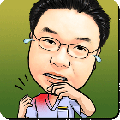
Periarthritis of Shoulder (Frozen Shoulder)
Key Diagnostic Points:
Pain in the shoulder which may be aching, dull, or stabbing in character. In the case of a sudden occurrence, the pain may be severe with the upper arm and the elbow involved. There is atrophy of the muscles in the shoulder with more than two sensitive tender points. For instance, under the acromian or in the anterior part of the shoulder. Both active and passive movements of the shoulder joint are limited, especially abduction, external rotation and elevation. It's often seen in those at the age of 50 or so which is called "shoulders of fifties". It's mostly due to chronic strain of the shoulder. It's a retrograde and inflammatory disease of the shoulder joint capsule and the soft tissues around it.
Differential Diagnosis:
Stagnation of Qi and blood in the shoulder.
Treatment Principle:
Removing Qi and blood stasis, relieve rigidity of muscles, activating the collaterals and stop pain.
Point and Technique Prescription:
Commonly Used Local Ashi Points Plus followings;
- L.I. 4 Yuan source point. It assists to send Qi though the channels in the shoulder.
- SJ 5 San Jiao is for Qi diseases. This point also helps to move the Qi in the shoulder.
- SI 3 Shu-Stream for painful joints and sensations of heaviness.
- ST 38 threaded thought to UB 57
The patient is encouraged not to be afraid of pain, but to do active functional exercise on the shoulder joints. he should, under the supervision of a doctor, perform activities of abduction, external rotation, extension and raising of the shoulder joint. The range of the movement should be extended gradually. The exercise can be aided by pulling a pulley, or climbing something. above so as to extend the range of movement of the shoulder joint. The patient must be told that the exercise should not be given up because of the pain that it creates.
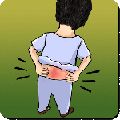
Chronic Back Pain is one of the most common reasons people seek medical attention. It has been estimated that up to 80% of the world's population will suffer from back pain at some point in their lives, with the lower back as the most common location of pain. Though most occurrences of back pain last less than two weeks, research has shown that recurrence rates for low back pain can reach as high as 50% in the first few months following the first episode.
Why Use Acupuncture for Back Pain?
The use of acupuncture to treat back pain has increased dramatically in the past few decades, based to a large degree on placebo-controlled studies that have validated it as a reliable method of back pain relief. The results of a recent study published in the Clinical Journal of Pain provide further proof that acupuncture is a safe and effective treatment for low-back pain, and that acupuncture can maintain positive outcomes for periods exceeding six months or longer without producing the negative side-effects that often accompany more traditional pain remedies such as anti inflammatory steroids or pain medication.
TCM (Traditional Chinese Medicine) Definitions of Back Pain
Kidney Chi Deficiency
According to Traditional Chinese Medicine theory the Kidney and Bladder Acupuncture Meridian govern the back. When there is a deficiency in Kidney Yin or Kidney Yang this may have a negative effect on the Acupuncture channels on the posterior of the body resulting in weakness, stiffness and/or pain in the back.
Liver Chi Stagnation
The body's Chi (Vital Energy) must flow freely for abundant health. In TCM the Liver organ governs the free flow of Chi in all areas of the body including the upper and lower back. Any impediment to the free flow of energy in the back will result in moderate pain and stiffness. As the Liver organ in TCM is closely associated with emotions such as stress, frustration and anger – we would often observe case histories where back pain is triggered or exacerbated by emotional triggers such as pre menstrual syndrome.
Blood Stagnation in the Lower Back
A severe form of Chi stagnation (above) blood stagnation or blood stasis in the lower back can result in severe stabbing pain on movement or rest. This is a result of long term Chi stagnation which eventually causes the flow of blood in the affected area to effectively become stuck. As in TCM theory the Chi (especially Liver Chi) moves blood in the acupuncture channels – any impediment to the free flow of Chi results in internal "friction" which almost often transforms into severe pain and stiffness. Blood stagnation in the lower back may form as a result of physical issues such as injury due to a fall, impact, exposure to cold wind or overwork and emotional issues such as long term stress.
Invasion of Wind Cold
According to Acupuncture theory the Kidneys are susceptible to invasion of wind cold or damp cold. This occurs when the lower back is frequently exposed to cold or damp weather resulting in depletion of the kidney Yang energies and as cold obstructs movement the eventual stagnation of Chi in the affected area. Invasion of cold may be accompanied by symptoms such as feeling of cold, tightness in the lower back, frequent urination and low energy.
Common Medical Causes of Back Pain
Lumbar Muscle Strain
Muscle strains are the most common cause of low back pain. Patients may or may not remember the initial event that triggered their muscle spasm, but the good news is that most episodes of back pain from muscle strains resolve completely within a few weeks.
Ruptured Disc
A ruptured intervertebral disc, also called a herniated disc, is another common cause of back pain. How to treat the back pain from a herniated disc depends on the particular individual and situation.
Discogenic Back Pain
Discogenic back pain is thought to be a common cause of low back pain. Discogenic back pain cis the result of damage to the intervertabral disc, but without disc herniation. Diagnosis of discogenic back pain may require the use of a discogram.
Spinal Stenosis
Spinal stenosis causes back pain in the aging population. As we age, the spinal canal can become constricted, due in part to arthritis and other conditions. If the spinal canal becomes too tight, back pain can be the result.
Lumbar Spine Arthritis
Arthritis most commonly affects joints such as the knees and fingers. However, arthritis can affect any joint in the body, including the small joints of the spine. Arthritis of the spine can cause back pain with movement.
Spondylolisthesis
Spondylolisthesis causes back pain because adjacent vertebra become unstable and begin to "slip." The most common cause of spondylolisthesis is due to degenerative changes causing loss of the normal stabilizing structures of the spinal column. If the spine becomes unstable enough, back pain can become a problem.
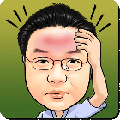
Migraine and Headache Sufferers
Acupuncture Can Help The pain that headache and migraine sufferers endure can impact every aspect of their lives. Acupuncture can offer powerful relief without the side effects that prescription and over-the-counter drugs can cause. Acupuncture and Chinese Herbal Medicine have been used to relieve Headaches and Migraines, as well as their underlying causes, for thousands of years and is a widely accepted form of treatment for headaches in our society. There are acupuncturists that specialize in the treatment of headaches and migraines and can help you manage your pain with acupuncture and Chinese herbs alone, or as part of a comprehensive treatment program.
Diagnosis with Traditional Chinese Medicine
Traditional Chinese Medicine does not recognize migraines and recurring headaches as one particular syndrome. Instead, it aims to treat the specific symptoms that are unique to each individual using a variety of of techniques such as acupuncture, Chinese herbs, tui-na massage, and energetic exercises to restore imbalances found in the body. Therefore, your diagnosis and treatment will depend on a number of variables: Is the headache behind your eyes and temples, or is it located more on the top of your head? When do your headaches occur (i.e. night, morning, after eating)? Do you find that a cold compress or a dark room can alleviate some of the pain? Do you describe the pain as dull and throbbing, or sharp and piercing
How Acupuncture Works
These questions will help create a clear picture on which your practitioners can create a treatment plan specifically for you. The basic foundation for Oriental medicine is that there is a life energy flowing through the body which is termed Qi (pronounced chee). This energy flows through the body on channels known as meridians that connect all of our major organs. According to Chinese medical theory, illness arises when the cyclical flow of Qi in the meridians becomes unbalanced Acupuncture is the stimulation of specific points located near or on the surface of the skin which have the ability to alter various biochemical and physiological conditions in order to achieve the desired effect.
The Acupuncture Treatment
Acupuncture points to treat headaches are located all over the body. During the acupuncture treatment, tiny needles will be placed along your legs, arms, shoulders, and perhaps even your big toe! There seems to be little sensitivity to the insertion of acupuncture needles. They are so thin that several acupuncture needles can go into the middle of a hypodermic needle. Occasionally, there is a brief moment of discomfort as the needle penetrates the skin, but once the needles are in place, most people relax and even fall asleep for the duration of the treatment. The length, number and frequency of treatments will vary. Typical treatments last from five to 30 minutes, with the patient being treated one or two times a week. Some symptoms are relieved after the first treatment, while more severe or chronic ailments often require multiple treatments.
Studies on Acupuncture and Headaches
Since the early seventies, studies around the globe have suggested that acupuncture is an effective treatment for migraines and headaches. Recent studies show extremely positive results: In a case study, published in the June 2003 Issue of Medical Acupuncture, doctors found that acupuncture resulted in the resolution or reduction in the frequency and severity of cluster headaches, and a decrease or discontinuation of medications. It was concluded that Acupuncture can be used to provide sustained relief from cluster headaches and to stimulate adrenal cortisol to aid in discontinuing corticosteroids. A clinical observation, published in a 2002 edition of the Journal of Traditional Chinese Medicine, of 50 patient presenting with various types of headaches were treated with scalp acupuncture. The results of this study showed that 98% of patients treated with scalp acupuncture experienced no headaches or only occasional, mild headaches in the six months following care. In a study published in the November 1999 issue of Cephalalgia, scientists evaluated the effectiveness of acupuncture in the treatment of migraines and recurrent headaches by systematically reviewing 22 randomized controlled trials. A total of 1,042 patients were examined. It was found that headache and migraine sufferers experienced significantly more relief from acupuncture than patients who were administered "sham" acupuncture.

Disney Employee's Discount Program
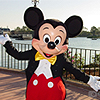
College Student's Discount Program

VA Medical Center Employee's Discount Program

Federal Employee's Discount Program

Senior's Discount Program

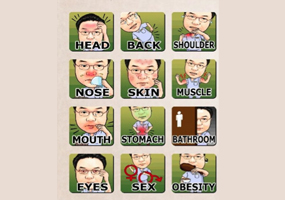
Living Herbs in Oriental Medicine
Herbal remedies for living is based on Yellow Emperor’s Inner Canon – Huangdi Neijing.
It would seem that advancement in the health care and medical fields would cause a reduction in the number of hospital patients; however, this is not our reality. For that reason, we have developed this application to inform and increase awareness/knowledge about an alternative health wellness option: oriental medicine.
From ancient times, food and medicine have developed from the same origins.
As “74th volume of Yellow Emperor’s Inner Canon – Huangdi Neijing” says, grains are the best remedy to prevent diseases. Vegetables and fruit will aid to your body by providing minerals and vitamins. Meats will give you power. However, Grains will help your available energy levels to increase (tonify). This food source is the only remedy that will help your internal organs to tonify.
Sage Wellness Center – Acupuncture & Herbs: LivingHerbs application presents information on eleven different kinds of diseases that can be addressed through the science of oriental medicine.; please refer to the homepage for more information. This application (Living Herbs) offers suggestions for diet and exercise that will lead to a productive and healthy lifestyle. There are a number of other diseases (besides the eleven mentioned in this application) that impact many people; however, one’s potential suffering with these issues will decrease if your internal organ levels are balanced.
Instruction I
Instructions Plan 1- The Living Herbs (Natural Grains and Home Exercise): The Living Herbs in Oriental Medicine was designed by Sage Wellness Center to help you find a natural way to heal your body of its ailments. By selecting the part(or parts) of the body that you are currently experiencing pain from, the Living Herbs App can tell you which grains and exercise will promote healing the fastest according to Oriental Medicine. You may choose from several different options, such as headaches, backaches, and shoulder pain, and then continue to narrow it down even further. If you select migraine headaches, the app will give you different grain options and exercises than if you had chosen headaches of the eye (eye strain). The app is very simple to use, and is rather handy when you want to feel better but are tired of taking over the counter medication for every ailment.
Ex) Grains: Brown Rice, White Rice, Millet, Black bean, Yellow Corn.
- You must mix equal amounts of each grain together.
- You can make them Powder so that you can drink like Shake type, and/or Steamed Cook as your daily dish 6 months to 3 years. Also you can make them Porridge.
Do not forget to stretch your body before & after your exercise. Do not Over exercise: you must feel more energy not like tired after exercise. Sweating too much means you are losing body temp in the field of Oriental Medicine. Power Walking (45mins or more) will benefit you more than anything else with your current medical condition.
Click here to view Stretching Exercises
Instruction II
Instructions Plan 2 – The Customized Natural Grains & Herbal Remedies: Although the Living Herbs app is very helpful to your body’s natural healing process, it is only the first step in a two step process. In order to get your organs to function efficiently, and learn how to control your lifestyle, it is recommended to have a free consultation with Sage Wellness Center, and we can develop a completely The Customized Natural Grains & Herbal Remedies in Oriental Medicine specific to your body and your needs based on SAGE QUESTIONNAIRES the field of Oriental Medicine. If you have any questions regarding the procedures you can always feel free to contact us and we will be more than happy to answer any questions regarding the Living Herbs app, or a customized treatment plan. Don’t forget that scheduling a consultation is always free!
Ex) Customized Grains: Brown Rice2, White Rice1, Millet2, Black bean1, Yellow Corn3.
- Numbers are “Ratio”: You must mix all the grains together according to the amount listed above.
- You can make them Powder so that you can drink like Shake type, and/or Steamed Cook as your daily dish for 6 months to 3 years. Also you can make them Porridge.
Customized Herbs: Pinyin (the official system to transcribe Chinese characters into Latin scrip)/pack
| Ren Shen Lu Long Chai Hu Fu Ling Gan Jiang Bu Gu Zi Xiang Fu Zi | Bing Lang Wu Wei Zu Bai Zhu Gui Zhi Gun Rul Shi Chang Pu Gang Gui |
Instruction III
Instructions Plan 3 – The Customized Natural Grains, Vegetables, & Acupuncture (Acupressure) Remedies: In order to get your organs to function efficiently, and learn how to control your lifestyle, it is recommended to have a free consultation with Sage Wellness Center – Acupuncture & Herbs, and we can develop a completely The Customized Natural Grains, Vegetables, & Acupuncture (Acupressure) Remedies in Oriental Medicine specific to your body and your needs based on SAGE QUESTIONNAIRES in the field of Oriental Medicine.
Ex) Customized Grains: Brown Rice2, White Rice1, Millet2, Black bean1, Yellow Corn3.
- Numbers are “Ratio”: You must mix all the grains together according to the amount listed above.
- You can make them Powder so that you can drink like Shake type, and/or Steamed Cook as your daily dish for 6 months to 3 years. Also you can make them Porridge.
- Vegitables Juice: Cabbage, kale, haoma, Angelica, Seaweed: Juicer or blender equal amount of those once a day

Acu Point Location: SP9 on the inside of the leg, under the kneecap in the hollow just below the bulge.
Direction: apply firm deep strokes of pressure in upward direction. The initial painful sensation will soon begin to subside.
Duration: 1 minSAGE WELLNESS CENTER - ACUPUNCTURE & HERBS ORLANDO REVIEWS


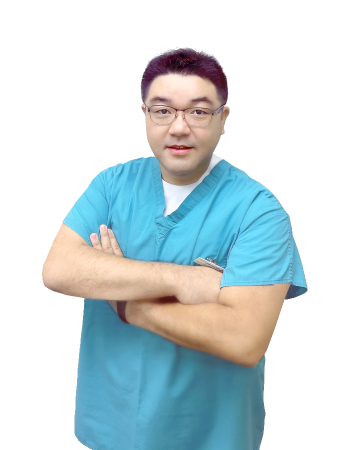
About Us

Jin H. Kim DOM, AP, Ph.D in Oriental Medicine
Dr. Kim, D.O.M. Ph.D in O.M. is proud of being a doctor of oriental medicine because it has been a part of his family for generations in South Korea. He received his Bachelor Degree from Texas A&M University - Kingsville, Texas. To earn his Master Degree in Oriental Medicine, he entered SAMRA University of Oriental Medicine, California, known as the one of the top and oldest Acupuncture and Integrative Medicine College in U.S. Also, he acheived his Ph.D in Oriental Medicine at American Liberty University, and he communicates and researches regularly with his professors who received doctorate in Oriental Medicine as well. He is one of the few more advanced and unique doctors in the field. If you have not found resolution or effective results from your health care provider, SAGE clinic is definitely the place to go! He's a member of NCCAOM (National Certification Commission for Acupuncture and Oriental Medicine) and Member of FSOMA (Florida State Oriental Medical Association).
At Sage Wellness Center - Acupuncture & Herbs in Orlando & Sanford, FL, we help you discover your own healing powers through acupunture treatments and herbal tea. Whether you are addressing a specific health concern or just want to boost yourself to the next level of wellness, we can help you find YOUR path to feeling great with Acupuncture & Herbs. For ten years as an Doctor of Oriental Medicine in Orlando, FL , our dedicated Holistic Doctor Jin H. Kim Ph.D in Oriental Medicine in Winter Park, FL have provided the highest quality herbs and acupuncture medical care for our Orlando community. People of all ages with an array of health conditions have benefited from our expert knowledge of natural medicine.
Our in-house medicinary of natural herbs has been carefully chosen by Dr. Kim to ensure each product has the best standards of production; the highest quality of ingredients; and offers optimal healing results. To assist in diagnosis, Sage Wellness Center - Acupuncture & Herbs at Winter Park & Sanford, Florida also utilize an extensive array of alternative lab tests to identify the root cause of illness – a core tenet of oriental medicine.
Sage Wellness Center - Acupuncture & Herbs has grown and Dr. Kim now have acupuncture lectures as an Out - Professor at Florida College of Integrative Medicine in Orlando, Florida. We delight in bringing natural medicine to our Orlando & Sanford community and we invite you to relax in our care within the urban oasis of our beautiful clinic spaces.
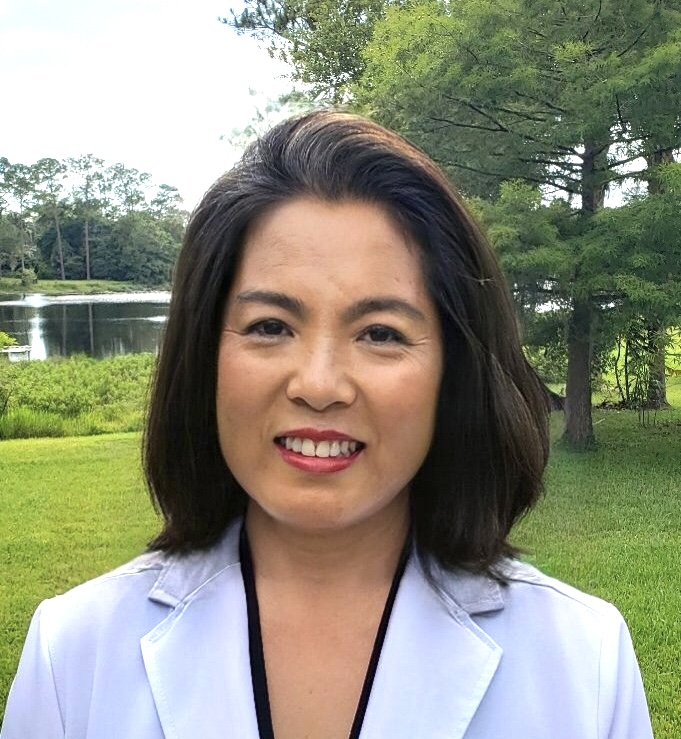
Kum Nam Hong (Angela) LAC
Kum Nam (Angela) Hong is originally from South Korea, she has lived in the Orlando area since 2004.
She graduated from the Florida College of Integrative Medicine in 2020, and is a
State of Florida, Board Certified Acupuncture Physician and herbalist.
She is also a University of Florida, Institute of Food and Agricultural Services – trained Florida Master Gardener. She devotes much of her time to gardening herbs for health. She is assisting the local Korean community by practice healthy living techniques.
Denise J Lawton LMT/NMT/RMT MA#24528 MM#38976
Denise Graduated in 1994 from Florida Institute of Massage Therapy-REESE Campus in Oviedo, Florida formerly Florida College of Natural Health with her Degree in Massage Therapy and Massage License. Denise is Gifted with many Skills and Talents through all these years and continues to build on them. Denise will customize your Therapy for your Best Result.
Keep in mind even without pain Massage Therapy on a regular basis can Benefit and Improve your overall Health for a Healthy Lifestyle. Denise also Graduated in 1999 from FTC as SUMMA CUM LAUDE with an AS Degree in Business Management/Computer Science. Denise continues her Socialistic Path studying towards Dual PhD's in Holistic Natural Health & Holistic Natural Nutrition..she says it's a long road but worth it to be able to help all those that choose her services.
Denise gives from her Heart to each and everyone and there is no exception to this in her Therapy work..to Denise everyone is a VIP! If Relief in Pain and Better HeaIth is your Goal then Schedule your Therapy with Dee .. You will see the difference.
Denise is also an Aromatherapist, Reflexologist and REIKI Master Teacher.
Yen Le ND, AP, Dipl. OM
I am a licensed Acupuncture Physician based in the heart of Winter Park, Fl.
I received a Master’s of Acupuncture and Oriental Medicine (M.Ac.O.M.) from the Seattle Institute of Oriental Medicine :recently renamed the Seattle Institute of East Asian Medicine, SIEAM. My primary mentors during mytraining, and who continue to be are Craig Mitchell Ph.D, E.A.M.P, Marguerite Dinkins M.AC.O.M., E.A.M.P,
Jason Robertson, E.A.M.P, Stephen Brown E.A.M.P, & Daniel Altschuler Ph.D, EAMP.
Licensed as an acupuncturist by the State of Florida and certified by the National Certification Commission for Acupuncture and Oriental Medicine (NCCAOM). I am also
certified with the National Acupuncture Detoxification Association (NADA) and Facial Cosmetic Revitalization Acupuncture.
I hold a Bachelor’s degree in Biomedical Science from the University of South Florida , Tampa Florida. Once I graduated in 2007, I went on to complete a Naturopathic Doctorate degree
from Bastyr University, Seattle WA in 2012.
During my studies in Seattle I pursued an ongoing 10-year study of healing through the lens of indigenous and native cultures from around the world. I've learned from teachers and healers who taught me ceremonies and healing modalities for communities and individuals in need. Through mentorships, I learned of my own passion for helping people who battle with PTSD on an everyday basis. I have worked with women surviving from sexual violence and strongly believe Acupuncture can bring healing to those who suffer from PTSD.
As an east coast native, there is no place like home. In my spare time, I continue to relish in the paradise of Florida beaches, spend time with family, friends, and plan my next travel destination - Ireland.
I continue to pursue advanced training in Acupuncture, Chinese herbal medicine, fertility, gynecology, gastroenterology, and classical medical Chinese.
Diplomate in Oriental Medicine (Acupuncture and Chinese Herbal Medicine)
Licensed Acupuncturist in Florida State
Board Certified Chinese Herbalist
National Association for Detox Acupuncture (NADA) certification for the treatment of addictions
Naturopathic Doctorate 2012. Not recognized in Florida State
Full Facial Rejuvenation Certified
Daci Ana Certified Hypnotherapist, Wellness Coach.
My name is Daci Ana and I consider myself an alchemist. To me an alchemist is someone who transforms energy, so in that sense I am the alchemist of my life; I say life because to me, life means energy in all of its forms. With the regular practice of meditation, since the late 90’s, I have gained a different perspective of life. Being an avid explorer of consciousness, I delight in knowing we are so much more than our physical body. I also enjoy discovering the layers of our multi dimensional selves.
Along my journey I discovered Astral Travel, Lucid Dreaming, Out of Body Explorations, Parallel Realities, Other Lives, Multiverses, the Field, the power of the Subconscious Mind, and more. The use and application of this knowledge in my current life has been the most helpful. Sharing this knowledge with others, makes my life so much more rewarding and exciting! I have transitioned from being the Founder and President of a large western Medical Center, to eventually, being me. There I served as Creative Director, Director of Mind & Energy Division, Practice Manager, Medical Reports Reviewer, Director of Sales for Naturopathic and Holistic products and Workshops Director & Speaker.
Many people have come forth grateful they have been inspired to take control of their lives, to expand their consciousness by self-explorations, having been provided with the necessary tools to achieve this. I have created and conducted workshops, group regressions and guided meditations; I have done Intuitive Photo Readings, Intuitive Energy Field Readings, Quantum Hypnosis sessions, Remote Healing, Channeled Readings, Reiki sessions, facilitated Past and other Life memory sessions and Spiritual coaching, internationally, for a number of years now.
I hold several certifications relevant to the field of consciousness, such as Quantum Healing Hypnosis Technique, Integrative Wellness Coaching, Quantum Energy, Kryia Yoga, Doctor of Divinity honorary. My knowledge is continually expanding, my search for the Known is very much active; I continue to learn and remember who I truly am. I still ask: Who am I? And what I am doing here? The learning and remembering doesn’t stop.
Health Fairs; Contact us to invite
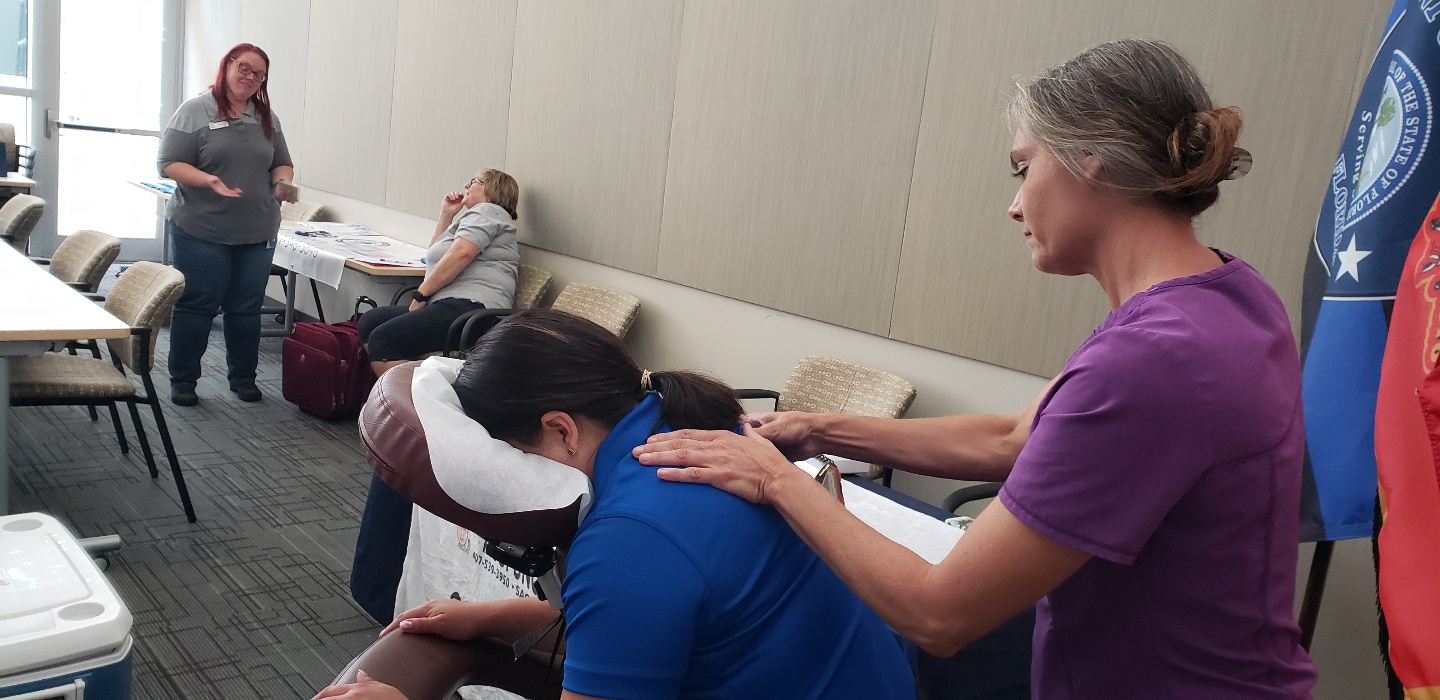
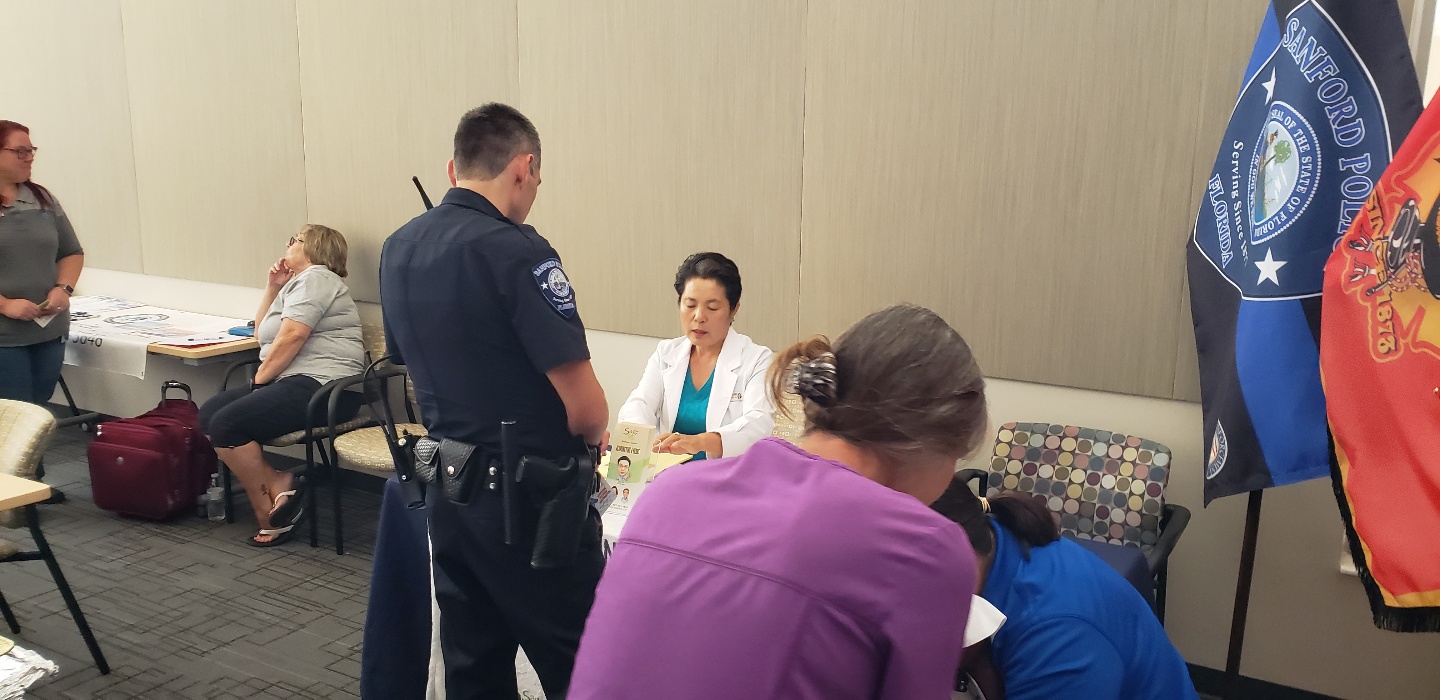
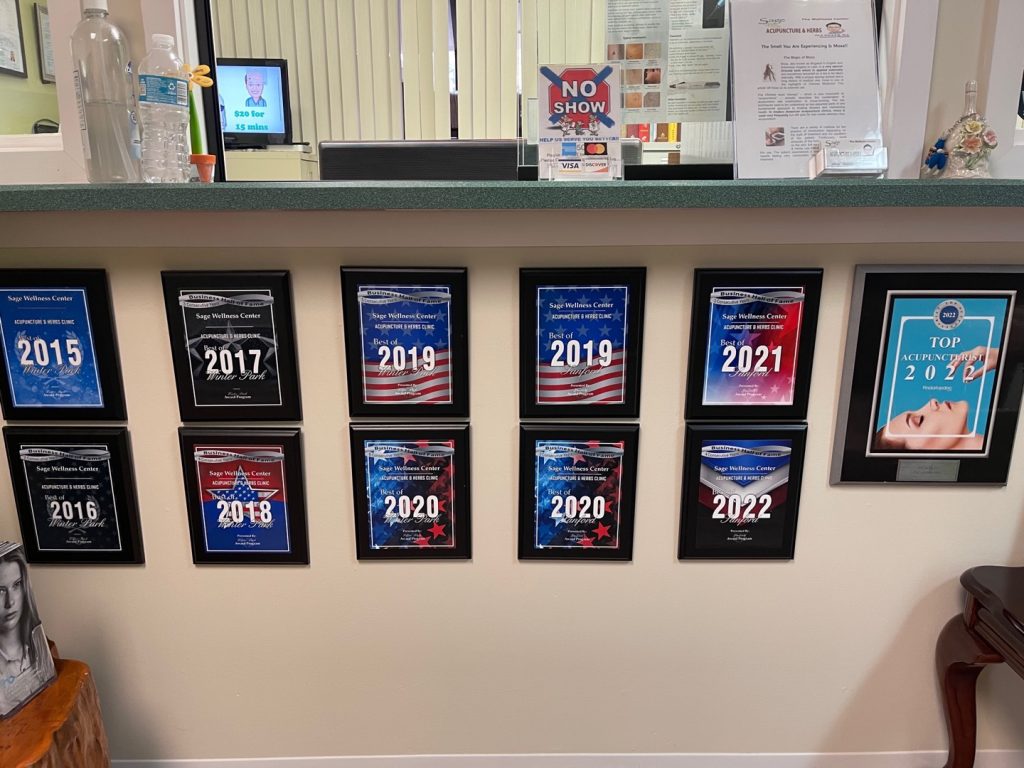
Clinic View
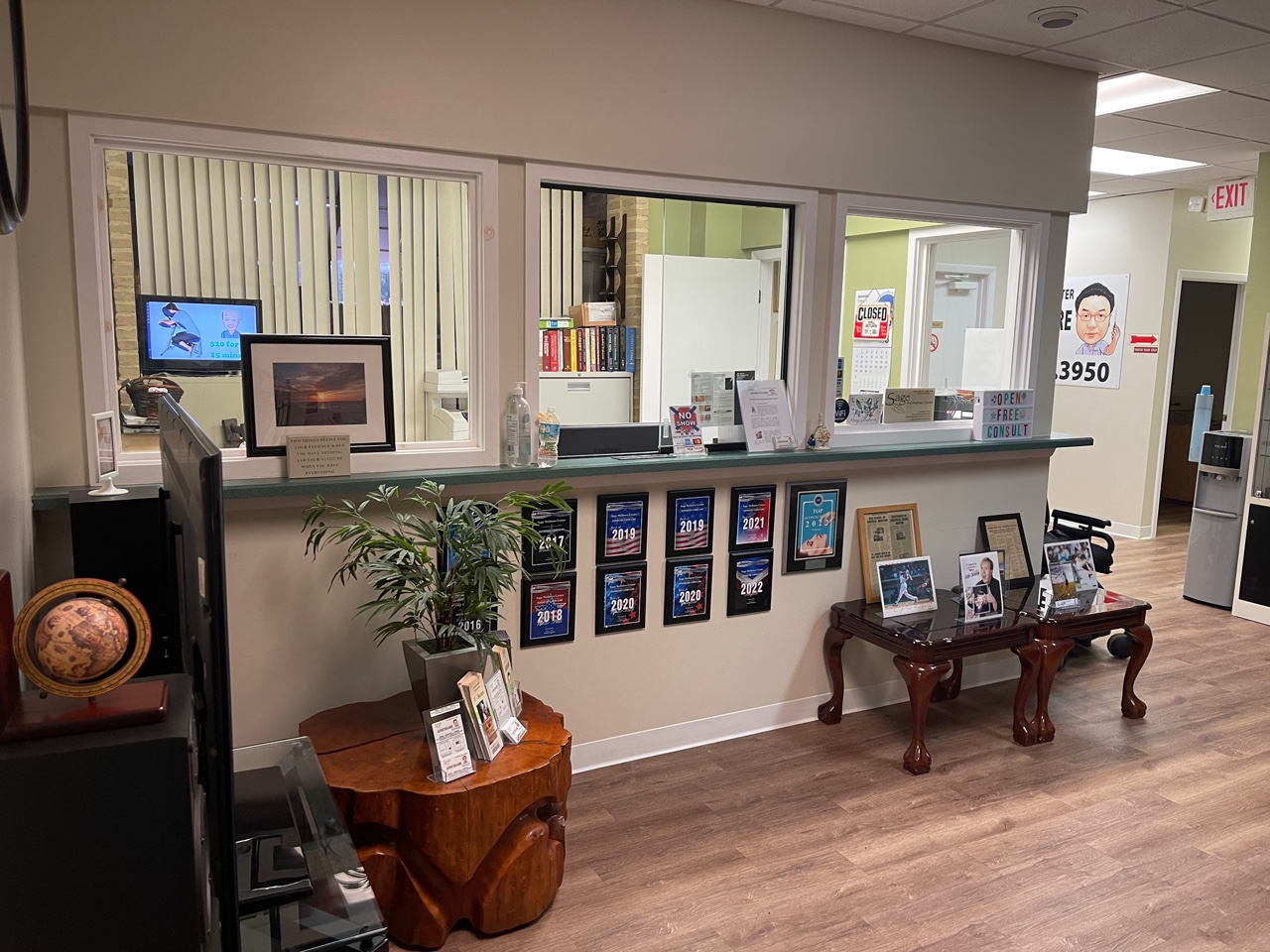
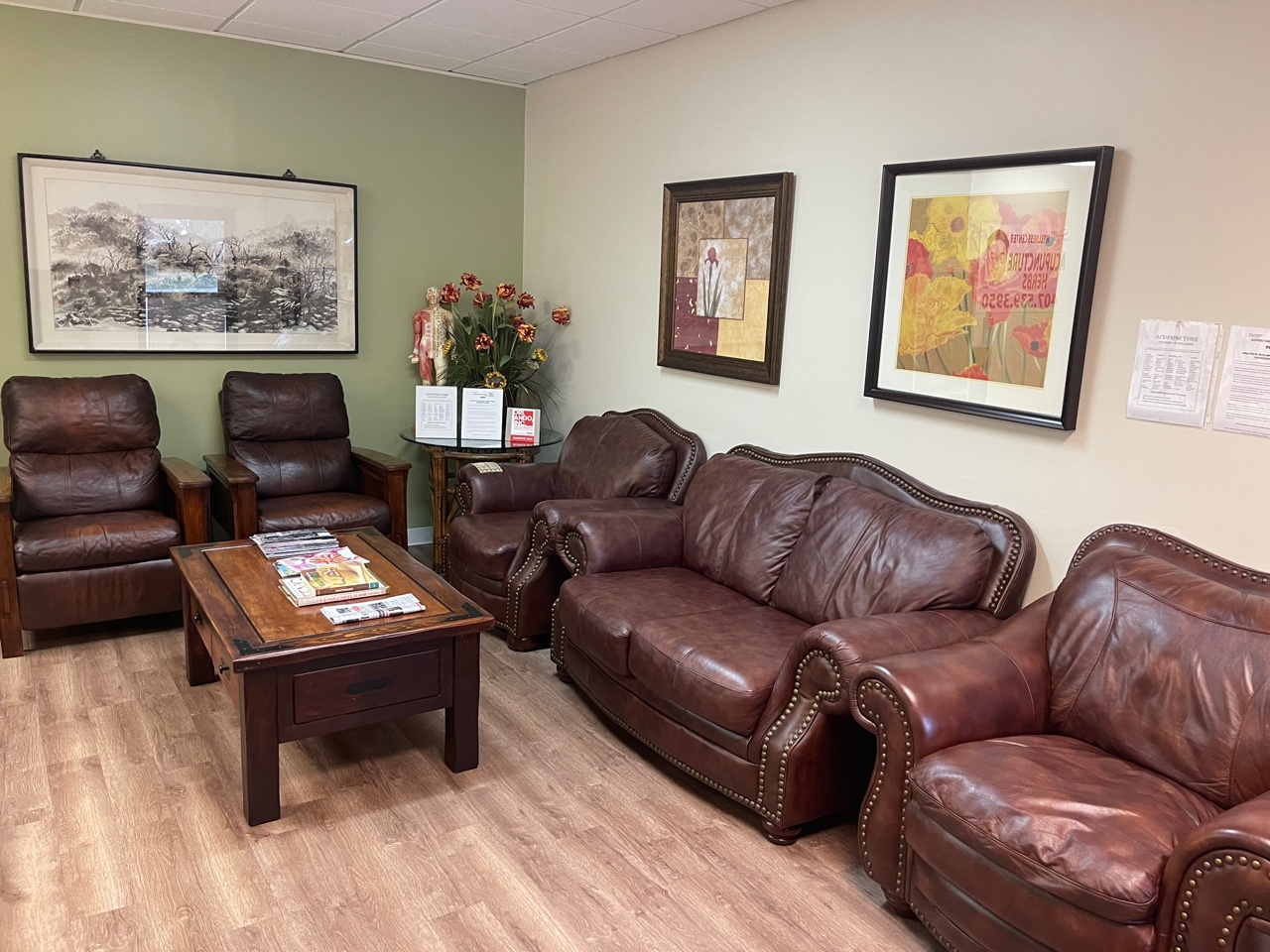
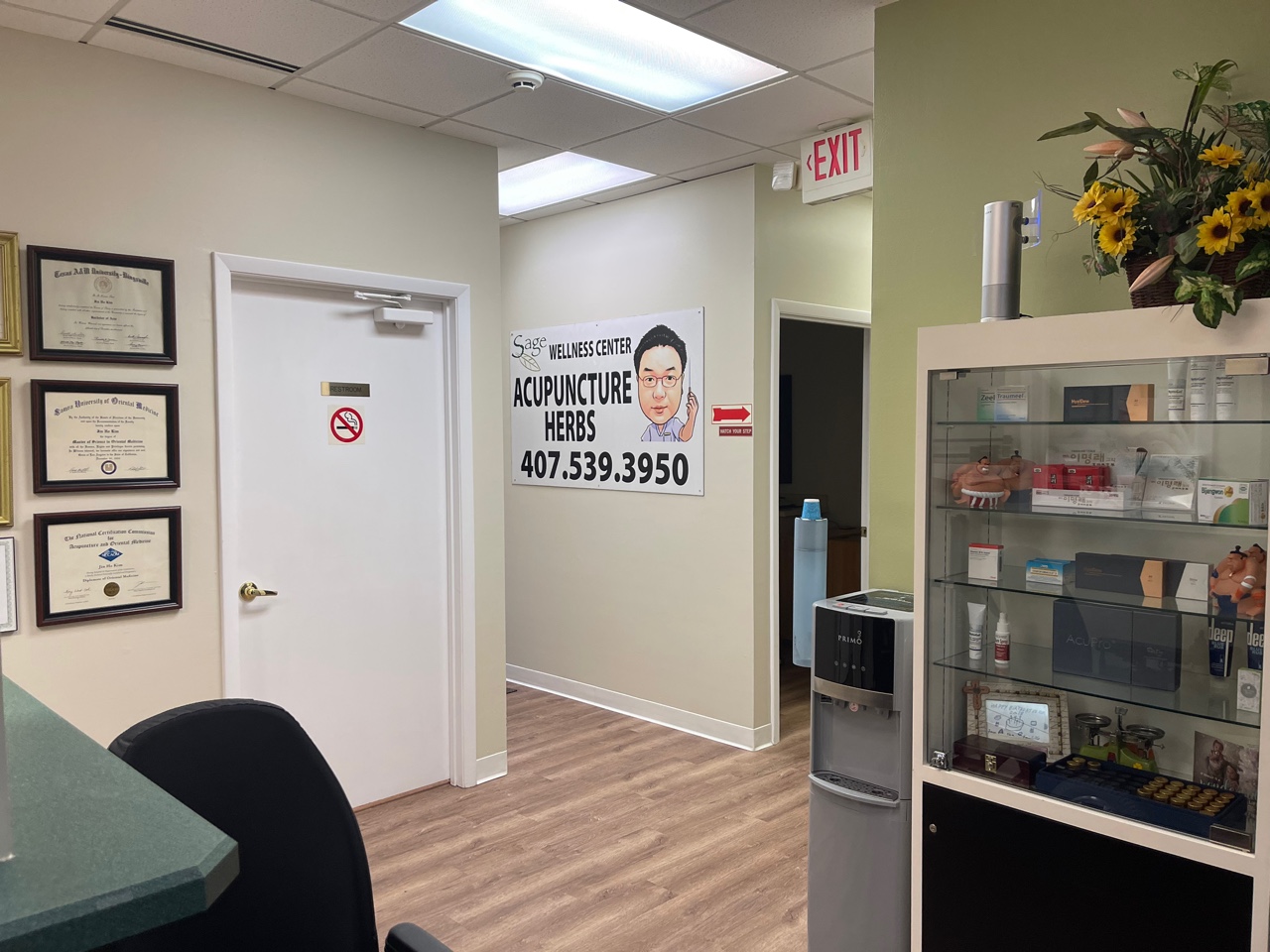
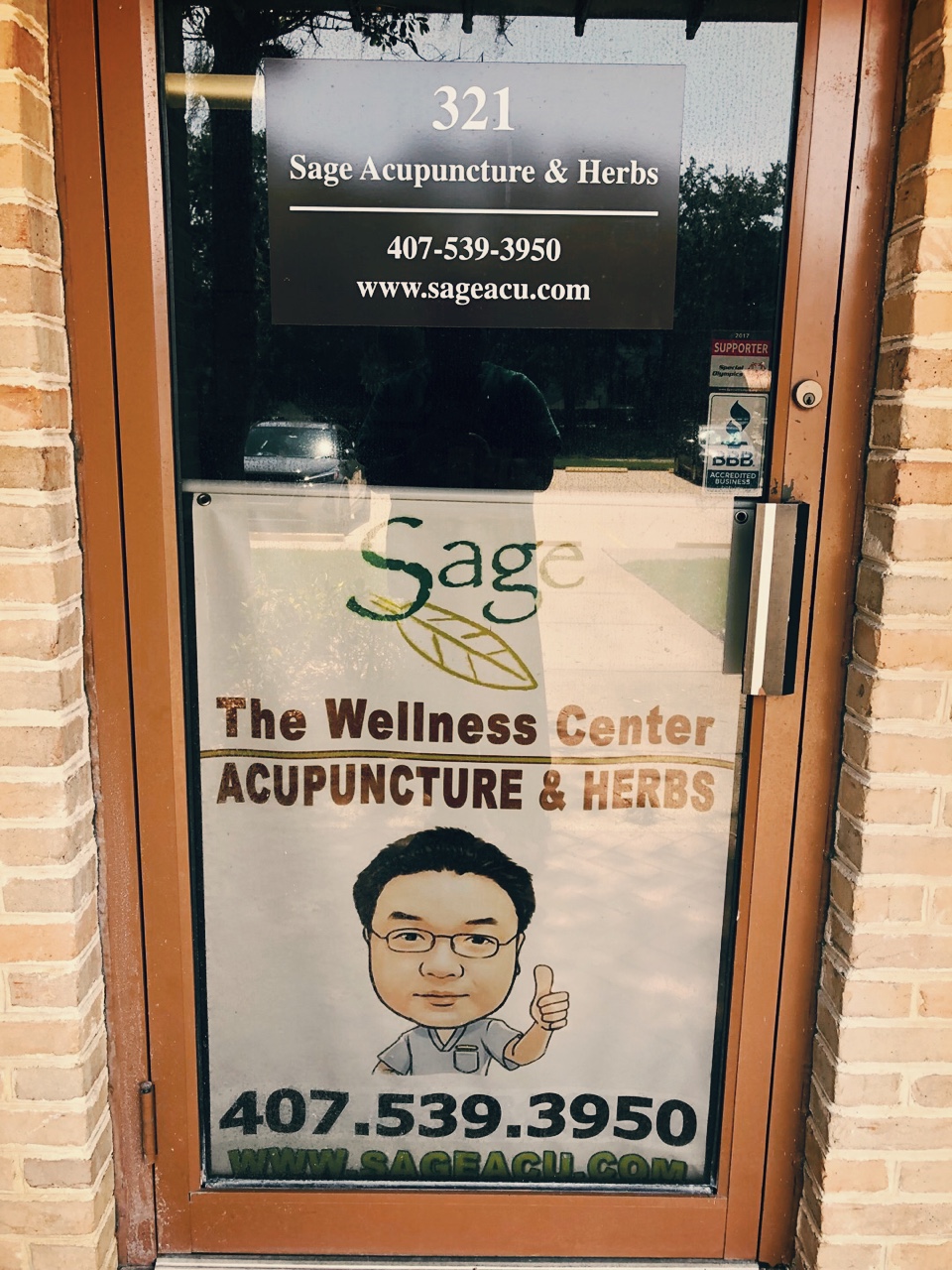
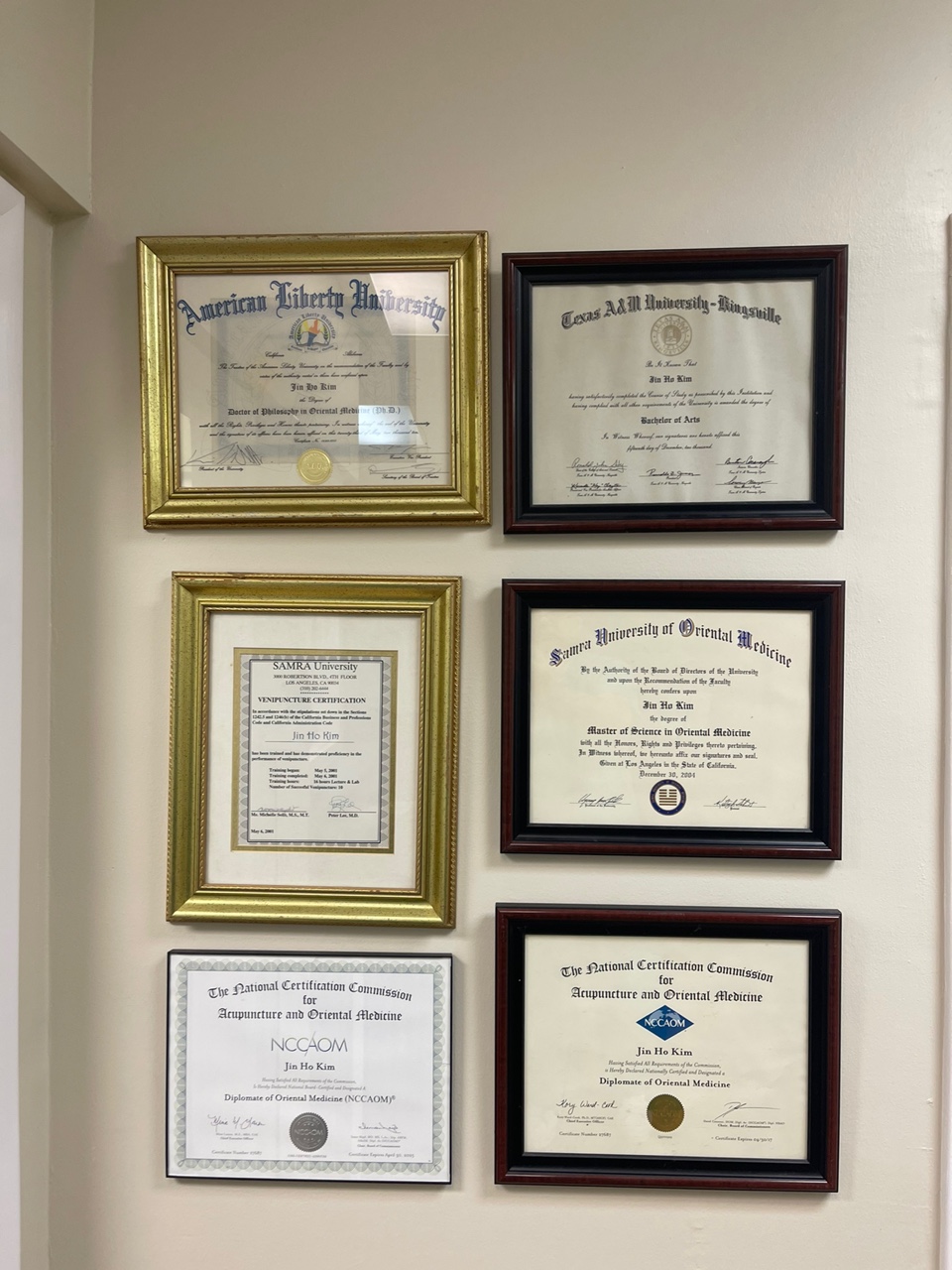
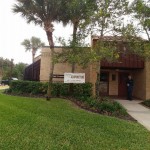
Celebrities

World Class Wake Boarder at Sage Wellness Center - Acupuncture & Herbs
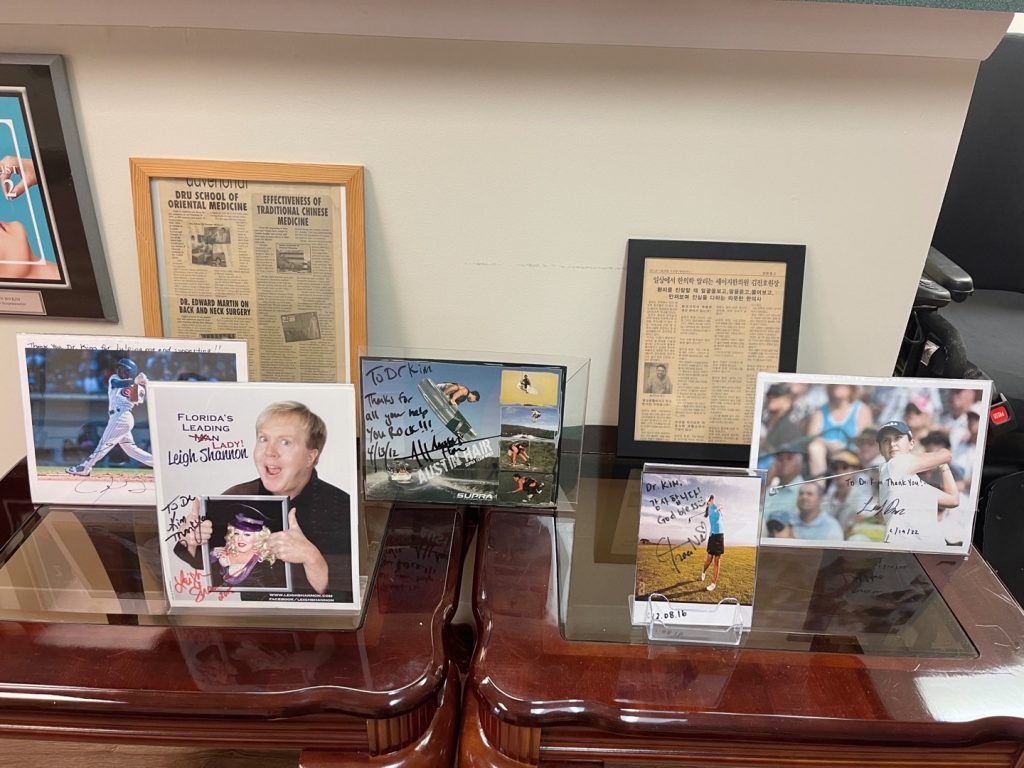
Free Download Our Brochure
